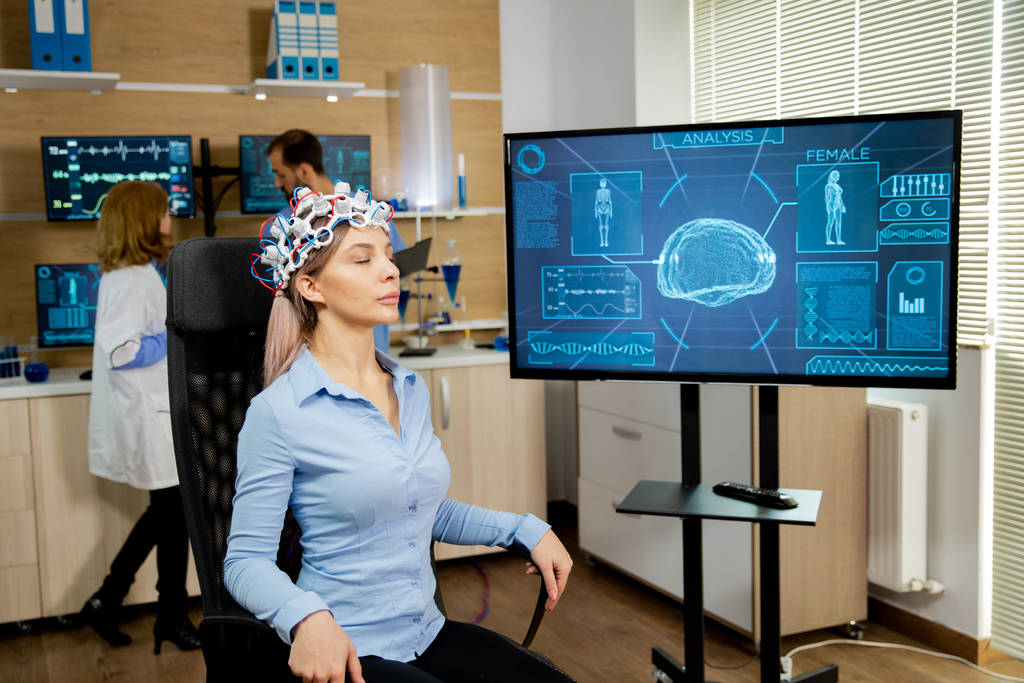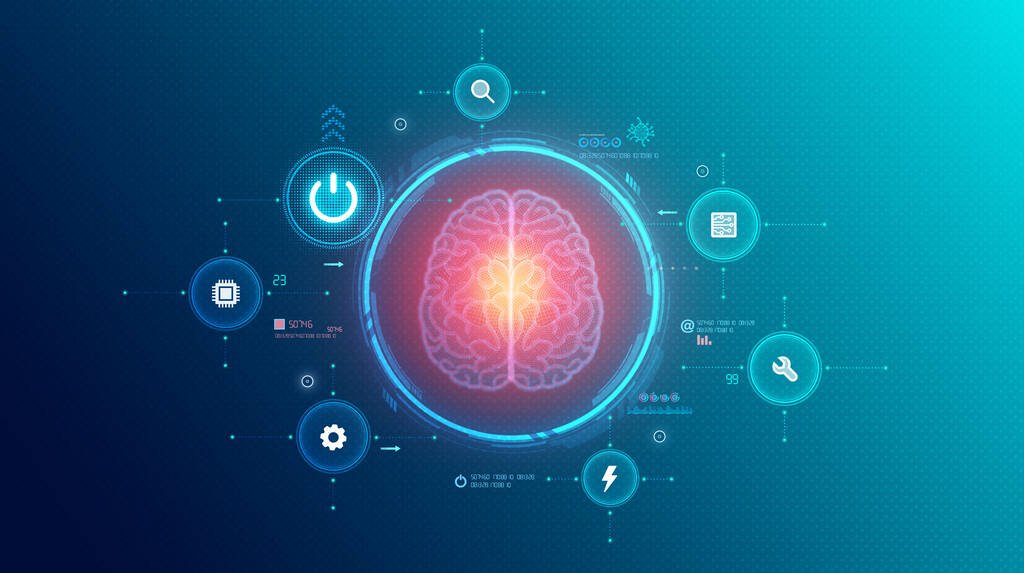Introduction
The mysteries of the human brain have confounded scientists for centuries. As modern technology has advanced, so has our understanding of the brain and what it is capable of.
One of the latest tools we have to unlock the mysteries of the human brain is known as computational neuroscience.
Computational neuroscience is a field of study that combines the fields of neuroscience, computer science, and mathematics to understand the workings of the human brain. It does this by using computer models to simulate how the brain works, and by analyzing data collected from experiments in neuroscience.
The aim of computational neuroscience is to understand the behavior of the brain at the level of individual neurons, and to create computer models that can accurately simulate the brain’s functions.
By doing so, researchers can gain insights into the mechanisms of the brain, its structure, and its development.
The mysteries of the human brain can be extremely complex and difficult to unravel. But by using the tools of computational neuroscience, researchers can break down these mysteries into more manageable parts and begin to uncover the workings of the human brain.
By using computational neuroscience, researchers can explore how the brain works to control behaviors, how neurons communicate with each other, and how the brain changes over time.
By understanding the details of how the brain works, researchers can gain insights into the mysteries of the human brain and how diseases, disorders, and conditions affect the brain.
The benefits of understanding the mysteries of the human brain are far-reaching. It can lead to a better understanding of how the brain works, how disorders are caused, and how treatments can be developed. It could also lead to advances in artificial intelligence, and even assist in the development of treatments for mental health and neurological diseases.
Computational neuroscience is an important branch of science, and it is growing rapidly in popularity. In this article, we will take a look at what computational neuroscience is, the benefits of uncovering the mysteries of the human brain, and the current research being done in the field.
We will also look at the applications of computational neuroscience, the advantages and disadvantages associated with it, and what the future of this field holds.
What is Computational Neuroscience?

Computational neuroscience is an interdisciplinary field of research that combines computer science with techniques from neuroscience to study the structure and function of the human brain. It is a relatively new field, which has grown exponentially since its inception in the late 1970s.
At its core, computational neuroscience focuses on understanding the complex neural networks of the human brain. This type of research is beneficial for uncovering the mysteries of the human brain and providing insights into the functioning of the brain and behavior.
The goal of computational neuroscience is to build mathematical models of the brain and its functions. This approach involves using sophisticated computer algorithms to simulate the brain’s behavior.
By combining different aspects of computer science and neuroscience, researchers are able to gain a better understanding of how the brain works.
Computational neuroscience has found applications in a variety of areas. It can be used to investigate the neural networks of the brain, to understand how the brain works, and to uncover new insights about the brain.
It has also become an important tool for studying the impact of genetics, environment, and other factors on the brain and behavior.
Computational neuroscience can be used to understand the brain’s neural networks and better understand how the brain works. This includes studying the structure of neural networks, understanding the interaction between different parts of the brain, and determining how the brain processes information.
In addition, computational neuroscience can be used to study cognitive processes such as memory, learning, and decision making. By understanding the brain’s neural networks and how they interact, researchers can gain insights into how these processes are regulated.
Lastly, computational neuroscience can be used to study perception and attention. This type of research is beneficial for understanding how the brain processes visual and auditory information. By understanding the neural networks that are involved in processing visual and auditory information, researchers can gain a better understanding of how the brain works.
Current Research in Computational Neuroscience

The use of computational neuroscience is well-established in the study of human brain mysteries, as it allows researchers to explore aspects of the brain that cannot be reached through traditional means. With the help of computational neuroscience, researchers have been able to gain valuable insights into the inner workings of the brain.
One area of research that has benefited from computational neuroscience is the investigation of human memory. By using computational neuroscience, researchers can study how memories are encoded, stored, and retrieved in the brain.
By understanding how this process works, researchers hope to be able to help people suffering from memory loss, as well as understand more about how our memories shape our life experiences.
Computational neuroscience also allows researchers to gain a better understanding of cognitive processes. By studying how the brain processes information, researchers can gain insight into how we make decisions, solve problems, and communicate with others.
By understanding these processes, researchers can help create more efficient artificial intelligence systems and treatments for cognitive disorders.
Additionally, computational neuroscience can provide valuable insights into how the brain perceives and pays attention to various stimuli. By using computational techniques, researchers can gain a better understanding of how the brain processes visual, auditory, and tactile information.
This understanding can help to improve methods for providing sensory feedback to people with disabilities, as well as helping to better understand how the brain works in normal individuals.
Finally, computational neuroscience can also help researchers to uncover the connections between different brain networks.
By using computational methods, researchers can analyze the complex connections between different brain regions and gain a better understanding of how the brain functions as a whole. By understanding these connections, researchers can gain insight into the causes of neurological disorders, as well as develop new treatments for these conditions.
Applications of Computational Neuroscience

The potential of Computational Neuroscience is immense, as its applications can be applied to many fields. Computational Neuroscience can help enhance Artificial Intelligence (AI), assist in mental health treatments, and discover new brain interactions.
In terms of AI, Computational Neuroscience can help machines better understand and simulate human behavior. By understanding the various mechanisms and complexities of the human brain, AI can be improved upon and made more intelligent.
AI can then be used to help develop new technologies and improve existing ones. For example, robots or machines could be programmed to better understand human emotions or respond in certain situations.
In the field of mental health treatments, Computational Neuroscience can be used to better understand how the human brain works and how different brain functions are interconnected. This knowledge can then be used to develop treatments for mental health issues.
Researchers are already looking into the use of Computational Neuroscience to develop treatments for various mental health disorders, such as depression, anxiety, and schizophrenia.
Finally, Computational Neuroscience can help uncover new brain interactions. With the help of sophisticated simulations, researchers can better understand how the various parts of the brain interact with each other.
This can help in the development of new treatments for brain-related disorders or diseases. Additionally, Computational Neuroscience can help researchers in understanding the neurological basis of various cognitive processes, such as memory and decision making.
Overall, the applications of Computational Neuroscience are far-reaching. By understanding how the human brain functions and works, Computational Neuroscience can help improve AI, assist in mental health treatments, and uncover new brain interactions.
In doing so, Computational Neuroscience can open up new doors in the field of neuroscience and provide us with better insights into the mysteries of the human brain.
Advantages and Disadvantages of Computational Neuroscience

Computational neuroscience has a number of advantages and disadvantages, which should be considered when using it to study the mysteries of the human brain. On the plus side, computational neuroscience allows researchers to explore complex processes within the brain in a way that was not possible before.
By using computational models, scientists can examine the neural networks and pathways of the human brain in greater detail than ever before.
Additionally, computational neuroscience is able to accurately simulate and replicate the behavior of specific neurons in the human brain. This allows researchers to observe how the brain works on a neuron-level, providing insight into how the brain works and how it forms memories and processes information.
This data can then be used to develop new treatments for neurological disorders and damage, such as Parkinson’s or traumatic brain injuries.
Furthermore, computational neuroscience can be used to create more advanced artificial intelligence systems. By analyzing the behavior of neurons and neural pathways in the human brain, scientists are able to create algorithms that are able to replicate human behavior and decision-making.
This could have a number of applications in the modern world, such as creating more intelligent robots or improving the accuracy of voice recognition systems.
Computational neuroscience can also help to identify new interactions between neurons, which could lead to the development of new treatments for neurological conditions. By analyzing the behavior of neurons in real-time, scientists can identify changes in the network and pathways of the brain and use this information to develop treatments or therapies that can intervene in these pathways.
On the other hand, computational neuroscience has some limitations. Firstly, computational models are only as good as the data they are given. If the data used to create the model is inaccurate or incomplete, the results of the model may also be inaccurate.
Additionally, neural simulations can take a long time to run, as they must calculate a large number of variables and can require a powerful computer to run them.
Furthermore, computational neuroscience is still a relatively new field and much of the research is still in its early stages. As such, the accuracy of computational models and the efficacy of treatments developed through them is still hard to determine.
Additionally, the cost of running neural simulations and the amount of time required for them can be prohibitively expensive for some research institutions.
In conclusion, computational neuroscience can provide a great deal of insight into the mysteries of the human brain. However, it is important to consider the advantages and disadvantages of using this technology before investing in it for research purposes.
With further development, computational neuroscience may become an invaluable tool for understanding the complexities of the human brain and developing better treatments for neurological disorders.

